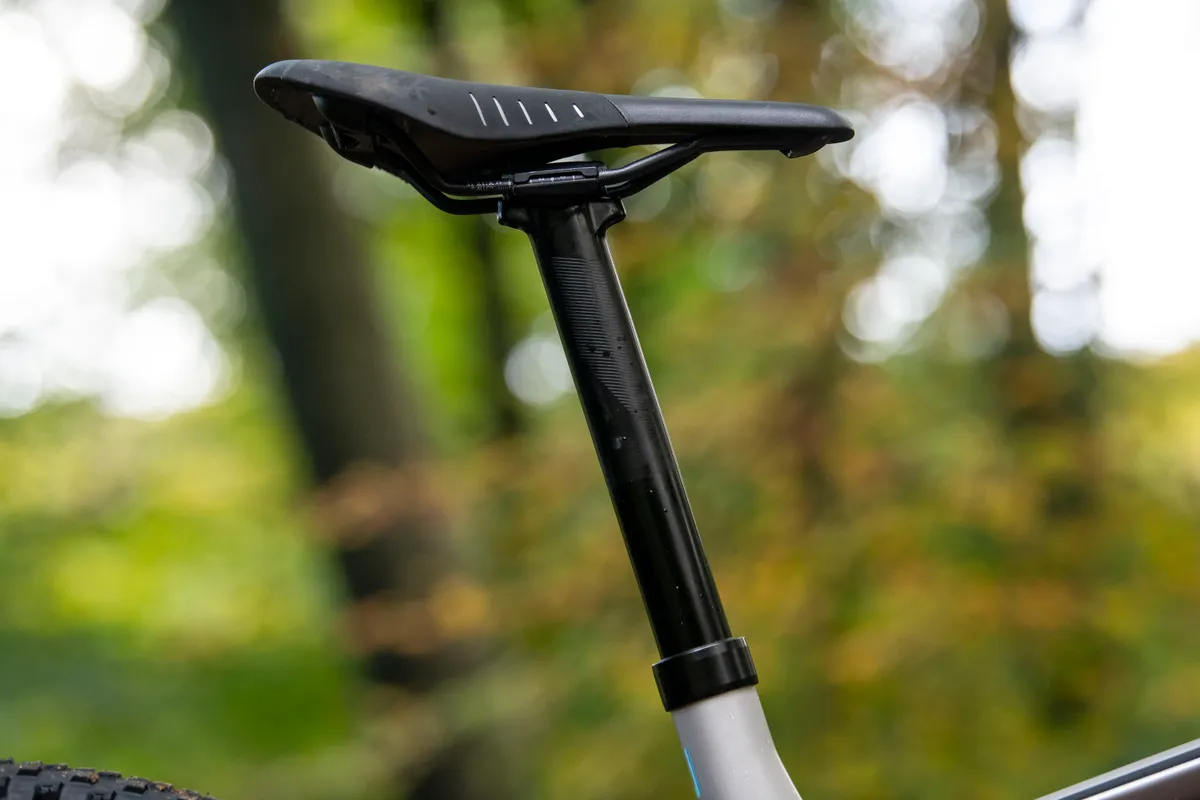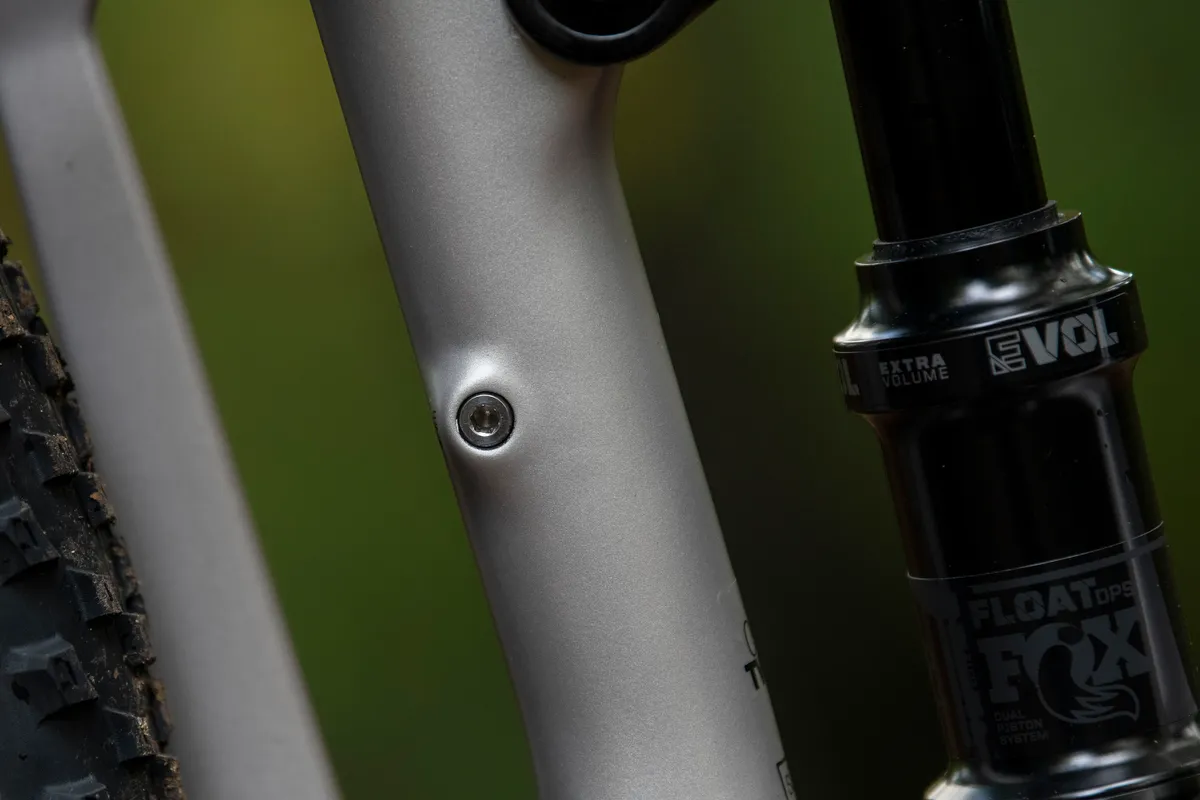The BMC Fourstroke 01 is a full-suspension cross-country mountain bike hailing from Switzerland. The twin-link suspension design gives the bike 100mm of travel, with the carbon frame featuring modern, if not radical, geometry.
BMC’s Fourstroke 01 Two has incredible race pedigree – Tom Pidcock raced to Olympic victory in Tokyo on his BMC Fourstroke, thrusting the bike into the collective consciousness of his British fanbase.
This 'Two' model sits in the middle of the bike's range, and while not festooned with the absolute top-end of kit, is certainly more than capable of taking on cross-country and marathon races.
BMC Fourstroke 01 Two AXS frame
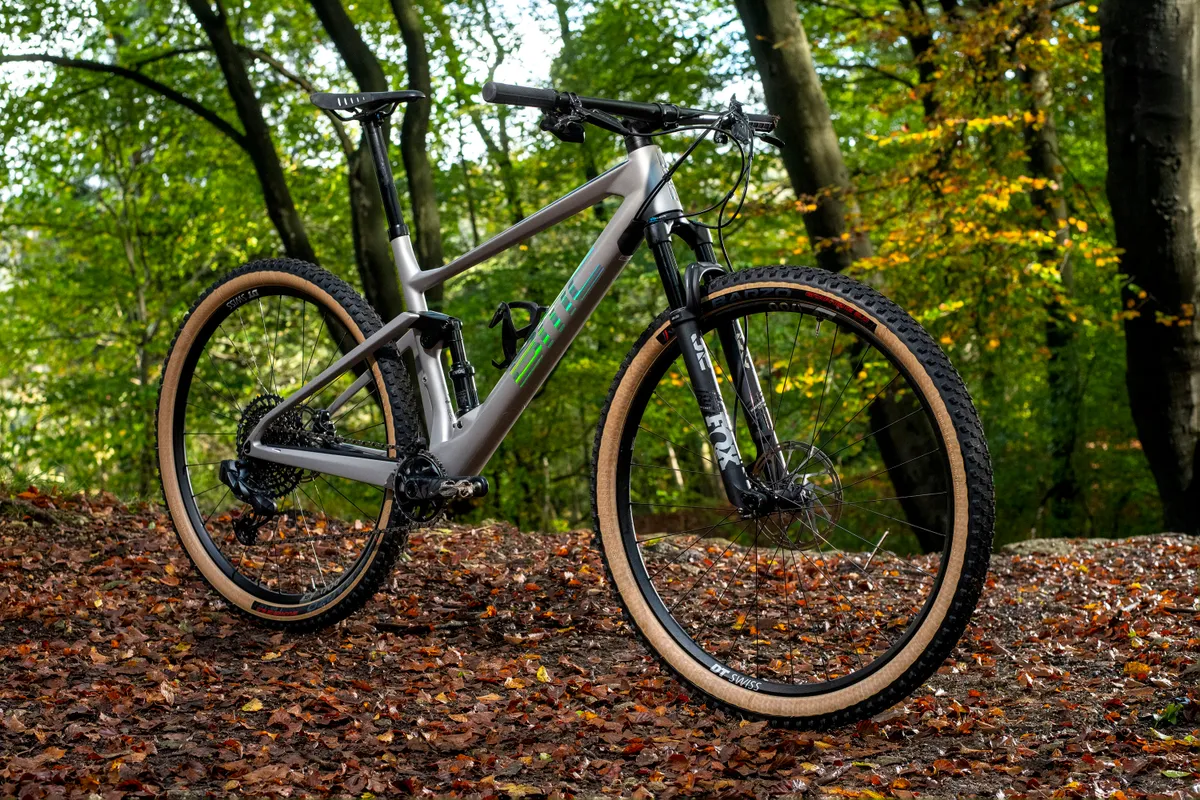
BMC employed its ‘Premium Carbon’ to build the frame, which uses the brand's APS suspension linkage. The two frame triangles are connected with a pair of links – the top rocker is there for all to see, while the small lower linkage is hidden close to the bottom bracket, and neatly protected from dirt by a moulded plastic cover.
The rear triangle is asymmetric, with a strut connecting the chain and seatstays on the non-driveside of the frame.

The suspension’s remote lockout cables are routed neatly to an exit port in front of the BB, while cable routing to the rear axle is push-through from front to back.
The frame has an integrated fork stop, so that the crown of the fork won't damage the down tube in a crash – it still allows plenty of fork rotation, though, so front-wheel-off bike storage isn't a pain.
There are bosses for a single water bottle inside the front triangle, which may not appeal to dedicated marathon racers, who'll be looking for a second.
The frame features a three-position integrated dropper seatpost, offering 80mm of total drop with a 60mm-drop intermediate position. Saddle height is adjusted via a 4mm hex bolt low down on the seat tube.
I measured minimum and maximum BB-to-saddle-clamp distances (with the post fully extended at its pedalling height) of 69cm to 76cm. Travel isn't infinite, unlike the majority of dropper posts on the market.
BMC Fourstroke 01 Two AXS geometry
The Fourstroke's geometry is certainly up to date, with a fairly low-slung form that shows promise on more technical terrain.
The top tube is low, aiding standover, while the head angle, at 66 degrees (measured), is as slack as many contemporary cross-country bikes. The 1,178mm wheelbase is long and the 75-degree (measured at pedalling height) effective seat angle fairly steep for a bike that's unlikely to sag too much.
| Size | S | M | L | XL |
|---|---|---|---|---|
| Rider height (cm) | > 172 | 172-182 | 180-188 | >188 |
| Top tube (mm) | 582 | 607 | 630 | 654 |
| Wheelbase (mm) | 1,129 | 1,155 | 1,180 | 1,206 |
| Seat tube angle (degrees) | 75.6 | 75.6 | 75.6 | 75.6 |
| Seatpost drop (mm) | 80 | 80 | 80 | 80 |
| Stack (mm) | 580 | 590 | 600 | 615 |
| Trail (mm) | 106.5 | 106.5 | 106.5 | 106.5 |
| Rear centre (mm) | 429 | 429 | 429 | 429 |
| Reach (mm) | 423 | 445 | 465 | 485 |
| Head tube length (mm) | 96 | 107 | 117 | 134 |
| Head angle (degrees) | 67.5 | 67.5 | 67.5 | 67.5 |
| Bottom bracket drop (mm) | 44 | 44 | 44 | 44 |
| Stem length (mm) | 50 | 60 | 60 | 70 |
| Seat tube (mm) | 420 | 440 | 480 | 510 |
BMC Fourstroke 01 Two AXS specifications

Upper-mid tier components feature on this second-highest level build in the range.
Suspension comes from Fox’s Performance Elite range, just lacking the Kashima coating of the Factory level. There’s a Float DPS shock and weight-weenie friendly 32SC fork. Both receive remote compression control via a lever that sits on top of the left-hand side of the bar, toggling between open, medium and firm settings.
SRAM supplies its wireless GX AXS drivetrain, leaving cable-routing holes empty in the frame. SRAM's Level TLM brakes squeeze 180/160mm rotors (160/160mm on S and M bikes), while DT’s XR1700 wheels hold Vittoria Barzo 2.25in tyres. The DT Swiss rims have a 25mm internal width.
Finishing kit comes from BMC, comprising a 760mm carbon bar and neat-looking stem – it's 60mm on the S, 70mm on the M and L, and 80mm on the XL. This seems odd to me – with geometry figures such as head angle remaining the same across the sizes, why alter the stem length for a given size?
Though a longer stem can give a roomier-feeling cockpit, the relationship between head angle, trail, stem length and bar width all interplay with the cornering feel and performance of a bike. If a bike has been designed with a stem length in mind, changing it will alter the handling characteristics of that bike.

BMC Fourstroke 01 Two AXS ride impressions
I tested the BMC Fourstroke at the same time as the Scott Spark RC AXS Team Issue, Intense Sniper XC Expert and KTM Scarp Master. This was done on a broad range of trails in the South West, with fast laps of local trail centres, all-day schleps across the countryside and more than a few scary moments pointing XC race bikes down wet, muddy, rooty chutes in the Forest of Dean.
Having raced XC in the South West, I also made sure I put some race-pace efforts in on an XC course that I know provides a good test of both bike and legs.
Setting up the bike was relatively easy, though everything got better once I removed the Vittoria Barzo tyres.
I usually aim for a fairly stiff 20 per cent sag on an XC bike, though due to the performance of the rear-suspension linkage, the pedalling performance of which didn't feel too impacted upon when run softer, I ended up running closer to 25 per cent sag on this bike to maximise descending capabilities.
Mechanically, the integrated seatpost needed replacing under warranty because it leaked air – BMC sorted that out quickly via a local bike shop.
BMC Fourstroke 01 Two AXS climbing performance
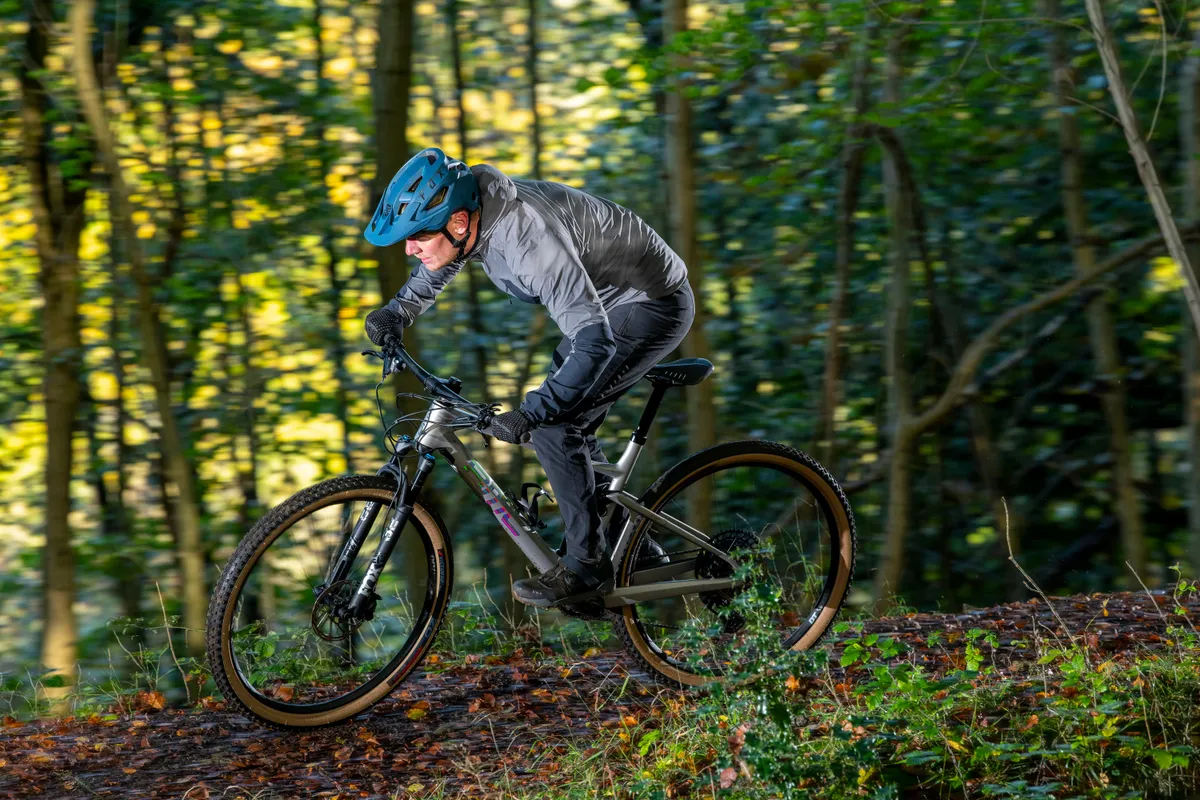
Uphill, the BMC has almost impeccable pedalling manners. The rear suspension is taught under pedalling loads, remaining firm enough to give effective bursts of speed under power and avoiding feeling like you’re pedalling through treacle. At the same time, it has just enough give to ensure the tyres are constantly drawing out as much traction as is on offer.
Bash the rear wheel into a rooty step, and it squats out of the way before returning to its neutral position without lurching you awkwardly up and over. Occasionally, there’ll be a scrabble for grip on a slimy rock, but that’s more a function of the tyres than the chassis.
So good is the suspension that I rarely felt the need to click the compression dial away from open. Certainly, the medium setting, which adds compression damping but doesn’t lock the shock (and fork), was rarely used, even when I experimented with more sag than usual for an XC bike. Locked out on tarmac, the Fourstroke is fast.
The remote's position is compromised by the inclusion of a dropper remote in its traditional under-bar, left-hand-side position. This leaves the remote sitting above the bar on the left. It took a little getting used to, but eventually flicking the push and release levers with my thumb became second nature.
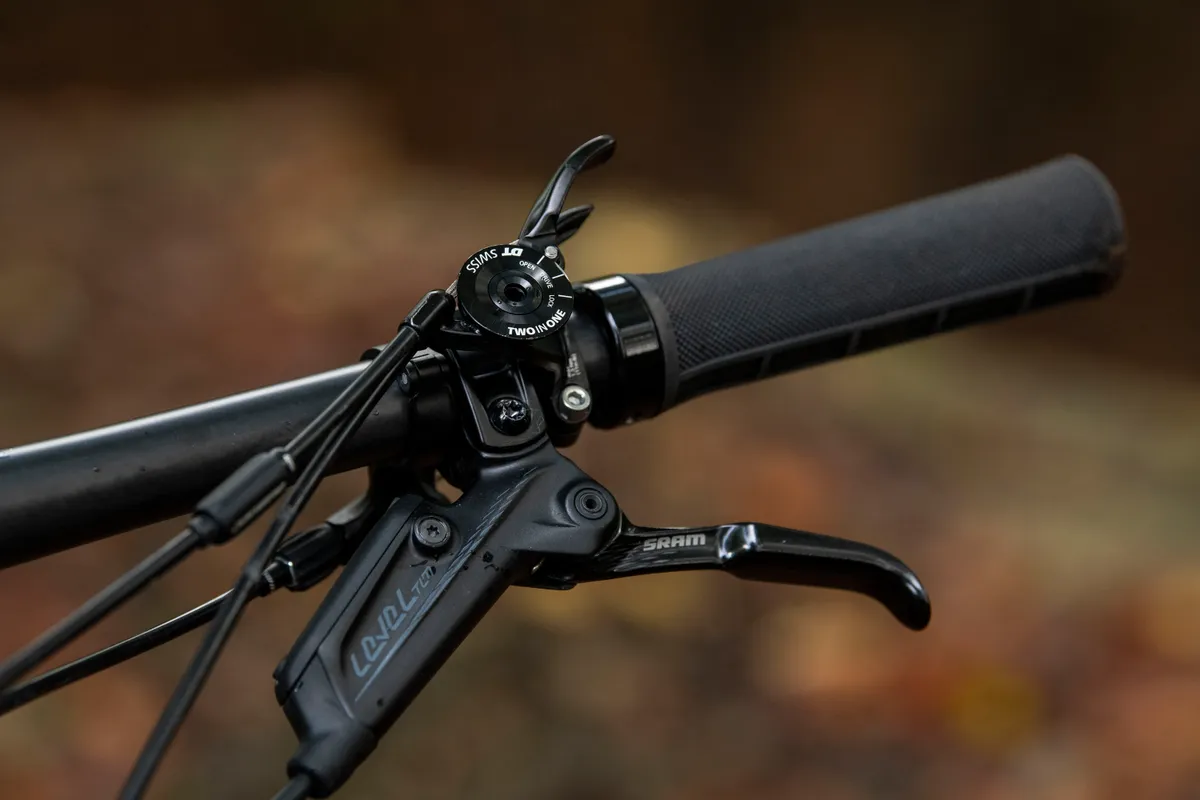
The Fourstroke impresses with its shape. The 75-degree seat angle that I measured is comfortable on prolonged climbs, and on the flat doesn’t put too much weight through your wrists. While the 465mm reach could be longer, it was rare that this held me back, and I never felt cramped on the bike.
BMC Fourstroke 01 Two AXS descending performance

As you might expect from a solid feel on the climbs, the Fourstroke pumps through rolling terrain well.
Speed can be generated on downslopes, and with a moderately slack (66-degree, measured) head angle, when you hit trail-centre berms you can confidently load the front wheel and push through the corner. This results in a bike that seems to egg you on to accelerate and push yourself towards your comfort limits of speed on a wide variety of trails.
Rear-wheel smoothness is good, though there’s an obvious trade-off with pedalling performance, as there is with any bike designed to pedal well. I didn’t find the suspension delivered lots of pedal kickback over the rough, but nor is it super-smooth. This is what drew me to run a little more sag.
Could I improve medium-sized bump performance without compromising pedalling performance? Certainly on rougher tracks, I'd be happy running the suspension softer to give a little more speed on the descents, knowing that the uphill performance is only marginally impacted upon (and, of course, bearing in mind the remote control of the suspension's compression settings).
There’s ample progression in the suspension to allow you to load it up before unweighting over matted roots or manufactured rock gardens. Even when I did hit trail features with less finesse, I rarely found the BMC complaining, rarely troubling the shock's bump stop.
BMC Fourstroke 01 Two AXS spec swaps

All of the above comes, though, with a caveat. Early on during testing, I swapped the Vittoria Barzo tyres for a pair of 2.4in Schwalbe Wicked Wills.
With the stock tyres, the bike feels much more nervous and skittery. The profile of the tyres is much more pointed, and their 2.25in width further reduces their usable volume.
I exited singletrack happy to have got to the end unscathed and even found their handling on tarmac slightly unstable and odd.
The wider, better-profiled and yet still fast-rolling Wicked Will tyres gave the Fourstroke a real lease of life.
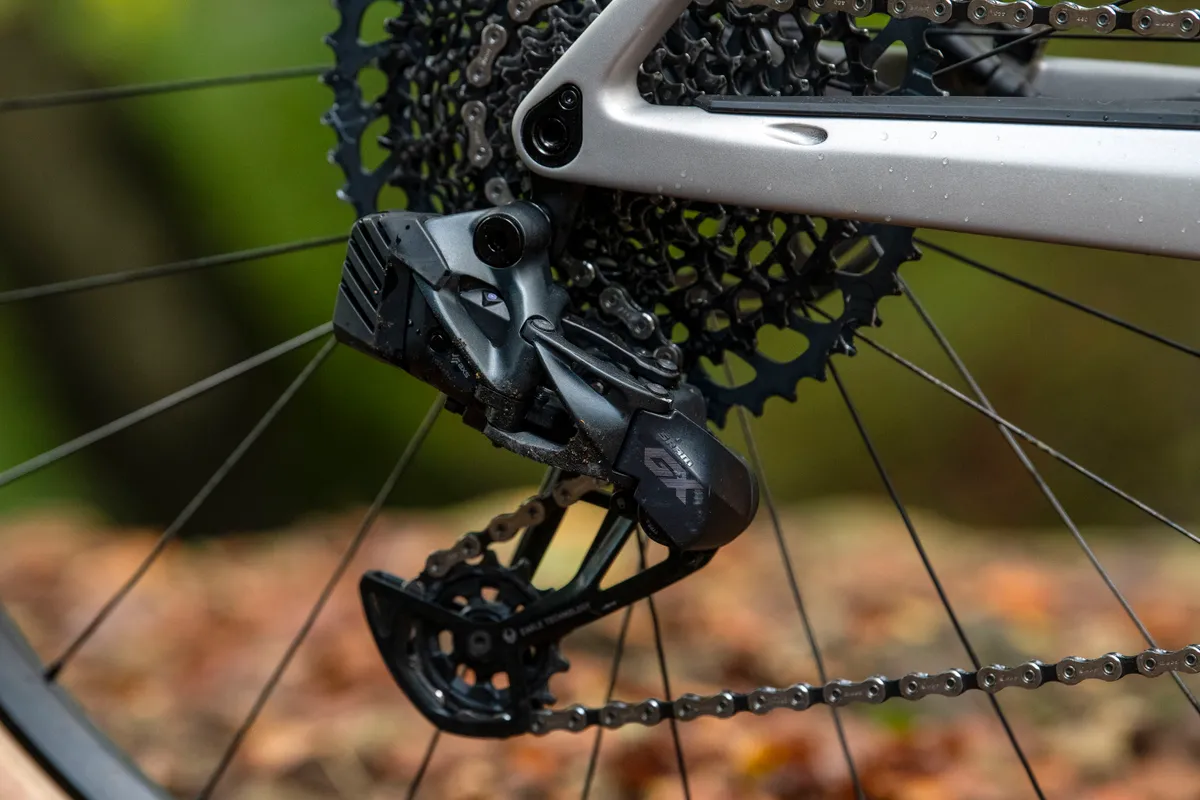
In terms of other kit, SRAM’s AXS drivetrain and Level brakes performed faultlessly, and on the whole the BMC finishing kit is well-shaped and comfortable.
On the whole, on a bike such as this, a three-position dropper isn't much of an issue for me, but only if the intermediate position is at a useful height. Sadly, I don't feel BMC has got it right.
The post drops 60mm or 80mm, but the 60mm position is both hard to find, and not very useful. It's hard to find, because by the time you've pushed the saddle down 60mm, it's not far before you've gone past its initial drop, and I frequently ended up with the saddle all the way down.
I'd also rather the saddle dropped 20mm initially, for practical purposes. With the saddle at full race-pedalling height, a small drop (or as I used to call it, a 'comfort inch') can be really useful on pedal-intensive but rough traverses, or even on super-steep, technical climbs. The 60mm drop is too low to effectively pedal from, and thus offers little over the full 80mm drop.
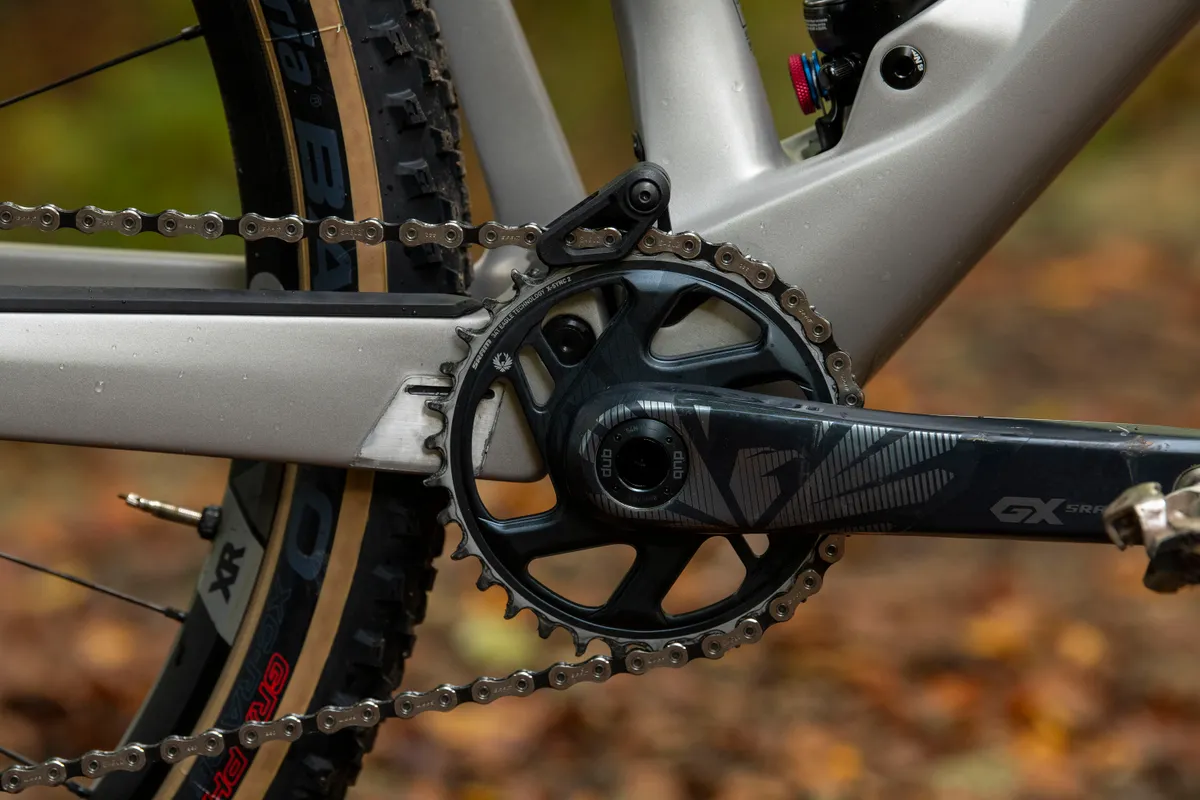
BMC Fourstroke 01 Two AXS bottom line
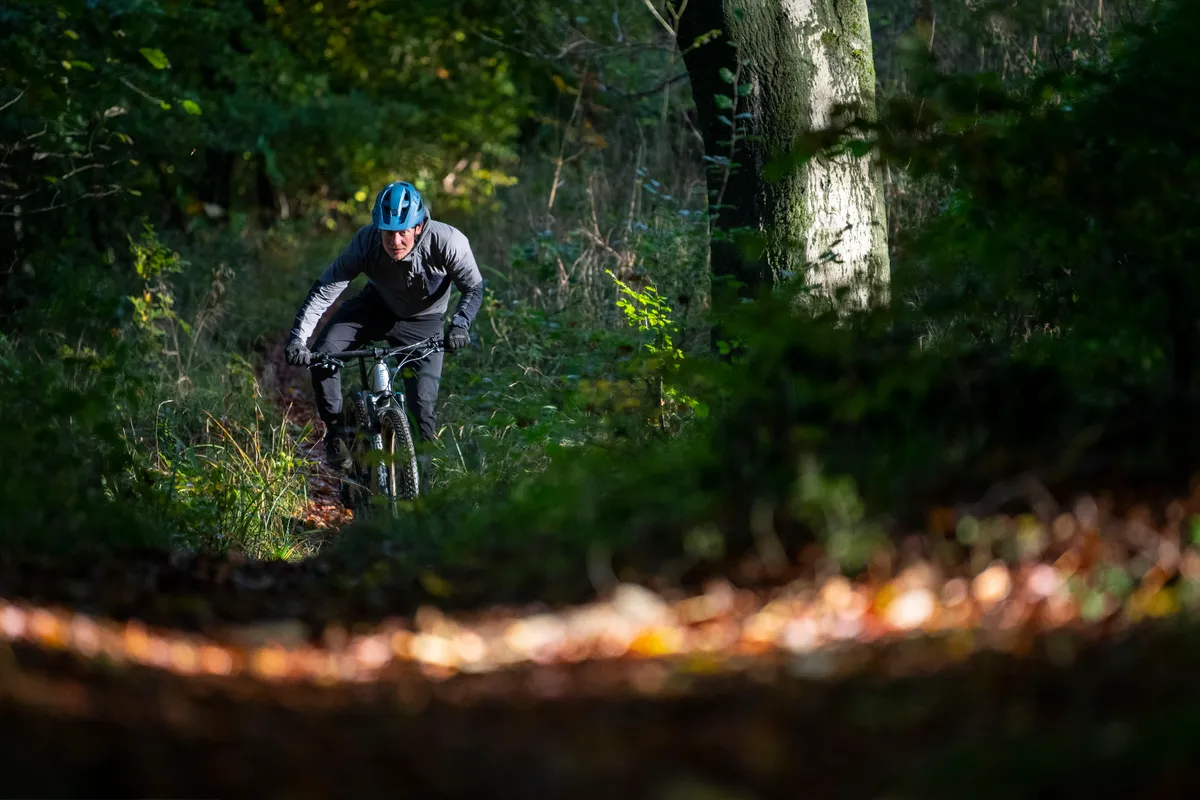
BMC has built a fine XC race bike. It pedals well – really well – with or without its easily accessible shock and fork remote lockout. As such, you barely have to think about what the bike's going to do when you unleash your maximum wattage.
At the same time, the shape of the bike suits the increasingly technical nature of XC race courses, and with a dropper getting the saddle out of the way, and suspension that doesn't baulk at rough rock sections or ungainly control off jumps and drops, it gives few excuses when the going gets tough.
It's not perfect. I'm not convinced BMC's neat integrated dropper offers any advantage, other than aesthetic, and I really didn't rate the tyres, at all.
While I can't claim to have the merest fraction of Pidcock's skill and fitness, I can really appreciate why he went to BMC when searching for his bike for Tokyo.
Product
| Brand | bmc |
| Price | 8499.00 EUR,8300.00 GBP,8999.00 USD |
| Weight | 11.3000, KILOGRAM (Large) - |
Features
| Fork | Fox Float 32 SC Performance Elite |
| br_stem | BMC MSM01 |
| br_chain | SRAM GX Eagle |
| br_frame | Fourstroke 01 Premium Carbon |
| Tyres | Vittoria Barzo 2.25 |
| br_brakes | SRAM Level TLM |
| br_cranks | SRAM GX Eagle Carbon 34T |
| br_saddle | Fizik Antares R7 |
| br_wheels | DT Swiss XR 1700 Wheelset |
| br_shifter | SRAM GX AXS Eagle |
| br_cassette | SRAM GX Eagle 10-52T |
| br_seatpost | BMC RAD, Integrated Dropper Seatpost • 80mm Drop |
| br_handlebar | BMC MFB01 Carbon 760mm |
| br_rearShock | Fox Float DPS Performance Elite |
| br_bottomBracket | SRAM DUB |
| br_availableSizes | S, M, L, XL |
| br_rearDerailleur | SRAM GX AXS Eagle |
